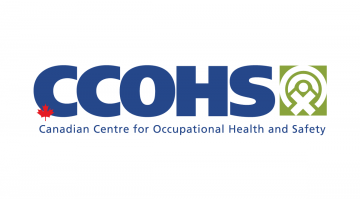Illness/injury prevention
IWH has a long history of conducting research to provide practical guidance to employers, workers, OHS professionals and regulators about what works and what doesn’t in injury or illness prevention. This research targets the injury and illness prevention practices of workplaces, as well as the programs developed by governments, health and safety associations and others to support and motivate workplaces to adopt effective practices.
Featured

At Work article
Differences in firm-level AI use for health and safety
To what extent are Canadian workplaces using artificial intelligence (AI) to help support workers’ health and safety? And what do these workplaces have in common? An IWH study surveyed firms across Ontario and British Columbia to find out.
Published: October 8, 2025

Impact case study
Saskatchewan’s construction safety group uses IWH tool to improve safety culture
This case study details how the Saskatchewan Construction Safety Association (SCSA) members have been analyzing IWH-OPM scores to adjust their safety practices and how SCSA has been using the data to tailor their outreach.
Published: February 10, 2025

Impact case study
Saskatchewan’s construction safety group uses IWH tool to improve safety culture
Since 2021, the Saskatchewan Construction Safety Association (SCSA) has been surveying its members twice per year on their organizations’ safety practices and culture using IWH’s Organizational Performance Metric (OPM). A new case study details how SCSA members have been analyzing OPM scores to adjust their safety practices and how SCSA has been using the data to tailor their outreach.
Published: February 2025

Issue Briefing
Cannabis use by workers before and after legalization in Canada
On October 17, 2018, the non-medical use of cannabis was legalized in Canada. To examine the implications of this change for workplaces, the Institute for Work & Health (IWH) embarked on two research projects. The studies explored changes in cannabis consumption habits among workers; changes in their perceptions about such consumption; associations between cannabis consumption and occupational injury risks; as well as the use of cannabis to treat symptoms in the aftermath of a work-related injury/illness. This Issue Briefing provides an overview of findings from these two studies and the potential implications of this research for employers and policy-makers.
Published: December 2024

At Work article
Consultants play key role in OHS implementation at small firms
Time and resource constraints may make it hard for small businesses to access health and safety support programs. But, as an IWH study finds, small businesses gain from even limited participation in such programs. The study, based on interviews with small businesses that took part in Ontario's Health and Safety Excellence Program, also highlights factors that contribute to their success in the program.
Published: November 2024
Journal article
Journal article
Incorporating sex and gender considerations in research on psychosocial work exposures and cardiovascular diseases: a systematic review of 55 prospective studies
Published: Neuroscience and Biobehavioral Reviews, October 2024
Journal article
Journal article
Risk of opioid-related harms by occupation within a large cohort of formerly injured workers in Ontario, Canada: findings from the Occupational Disease Surveillance System
Published: Occupational and Environmental Medicine, October 2024
Journal article
Journal article
Developing a gender measure and examining its association with cardiovascular diseases incidence: a 28-year prospective cohort study
Published: BMC Medicine, October 2024

IWH in the media
Cobbling together multiple jobs to make a living...What's the real cost on you?
Filling your spare time with side hustles can put more money in your pocket, but what will it cost you? In an episode of Ontario Today, host Amanda Pfeffer and guest Deena Ladd take calls from listeners. They also mention an IWH study on the link between injury risks and precarious work, conducted by Dr. Faraz Vahid Shahidi (at 24m 24s).
Published: CBC Radio One, September 2024

IWH in the media
The link between unpaid overtime, stress, and burnout
Working unpaid overtime is linked to high stress and burnout, according to recent research by the Institute for Work and Health. Previous research has connected working overtime with psychological distress. But the Institute for Work and Health study is the first of its kind in Canada to distinguish between paid and unpaid overtime.
Published: Canadian Centre for Occupational Health and Safety, September 2024
Project report
Project report
Participation in the Health and Safety Excellence Small Business Program: Understanding small business motivations and needs
The Workplace Safety & Insurance Board (WSIB) of Ontario launched the Health and Safety Excellence Program (HSEp) in 2019 to help Ontario employers improve their management of workplace health and safety. In 2021, to increase the participation of small businesses, the WSIB and the Ministry of Labour, Immigration, Training and Skills Development adjusted several program features and launched the HSEp Small Business Program. This report summarizes the results from a study aimed at understanding the needs, motivations, and experiences of the selected cohort of small businesses in the program and identifying effective approaches to improve the delivery of occupational health and safety (OHS) services to small businesses.
Published: September 2024

At Work article
Higher risk of work injuries found among those in precarious jobs: IWH study
Workers in jobs where precarious employment conditions are more common are more likely to experience a work-related injury or illness in Ontario, including COVID-19. That’s according to a pair of studies authored by Institute for Work & Health (IWH) researchers that examined whether employment conditions—for example, temporary contracts, involuntary part-time hours, irregular schedules and low wages—may be linked to the rate of work injuries.
Published: September 2024